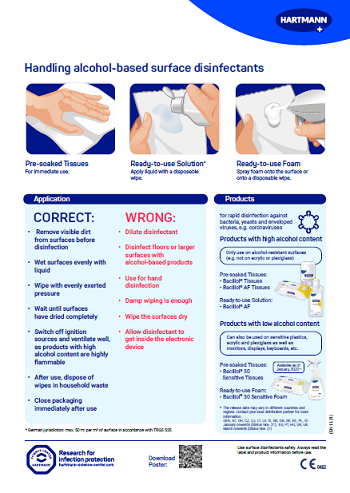HARTMANN SCIENCE CENTER

Most nosocomial pathogens are able to persist on inanimate surfaces for months. Particularly near patients, where frequent hand and skin contact occurs, there may be a risk of infection. For this reason, disinfection of near-patient surfaces is an integral part of infection control. A recent review [1] shows what needs to be considered.
Near-patient surfaces, for example bedside tables, bedframes or infusion stands, are an important reservoir for nosocomial pathogens. Hence, typical hospital germs such asClostridioides difficile, MRSA, VRE orAcinetobacter baumanniiare often found in the patients’ immediate surroundings. But also surfaces near non-infected patients may be contaminated. The pathogens stem from, for example, previous occupants that had been infected and colonised, respectively, or unknown carriers among medical personnel or visitors.
From contaminated surfaces, the microorganisms may be transmitted to the hands or skin of employees. Effective disinfection of near-patient surfaces may reduce the rate of incident cases significantly.
What you should consider when disinfecting near-patient surfaces:
For all routine surface disinfection procedures, the treated surfaces can be used again as soon as it is visibly dry. Exception: Wait for the entire exposure time, in case special pathogens such asC. difficileor multi-resistant bacteria occur.
Examples of risk surfaces with frequent hand and skin contact:
